Issue #13 - “DEAD AND ALIVE: BEING WITH ANCESTORS” Part I
Issue #13, September 2021
TABLE OF CONTENTS
Lise Weil, Kristin Flyntz, Azul Thomé, Sharon Simone, Redwing Keyssar, Miriam Greenspan, Melissa Kwasny, Marcia Weese
Editorial Conversation
Azul Thomé
Being with Ancestors
Sharon Simone
The Summoning
Kristin Flyntz
Gathered by Elders
Melissa Kwasny
Poetry by Sheryl Noethe, M.L . Smoker, Sandra Alcosser, J.I. Kleinberg, Ysabel Y. Gonzalez, Mariana McDonald
Redwing Keyssar
Gift from the Ancestors: My Work as an RN/Midwife to the Dying
Cheryl Potts
Soul Companions
Miriam Greenspan
There is no Light so Bright as that which Shines from the Darkness
Marcia Weese
Above/Below: Monographs and Etchings
DREAMS AND VISIONS
Deena Metzger, Sharon English, Andrea Mathieson, Larissa Lai, Shirley Graham, Patricia Robertson, Sangita Iyer, Catherine Bush, Lise Weil
Darkness as a Field of Being
Marcia Weese
Above / Below
Monotypes and etchings from a recent exhibition
Everyone has a point of reference. For me, it is luminosity—a quality of light that points to an inner life.
The deep intelligence of the natural world, amidst her myriad mysteries, resides in everything NATURE and lies BELOW the surface of things. ABOVE is the manifestation of this intelligence, or ‘what we think we see.’ This work points to the juxtaposition of these two worlds and asks the question: can we synthesize these realms to come into better
balance as humans and live more harmoniously with nature? Can we honor our ancestors who have come before us, have lived through eons, and have added to the collective bank of wisdom? These ancestors include all sentient beings-- animals and plants, rocks and rivers, trees and whales. When we look deeply, we can see little separation between ‘us’ and ‘them.’ We humans are part of a much larger whole.
A continuum of life and death and life.
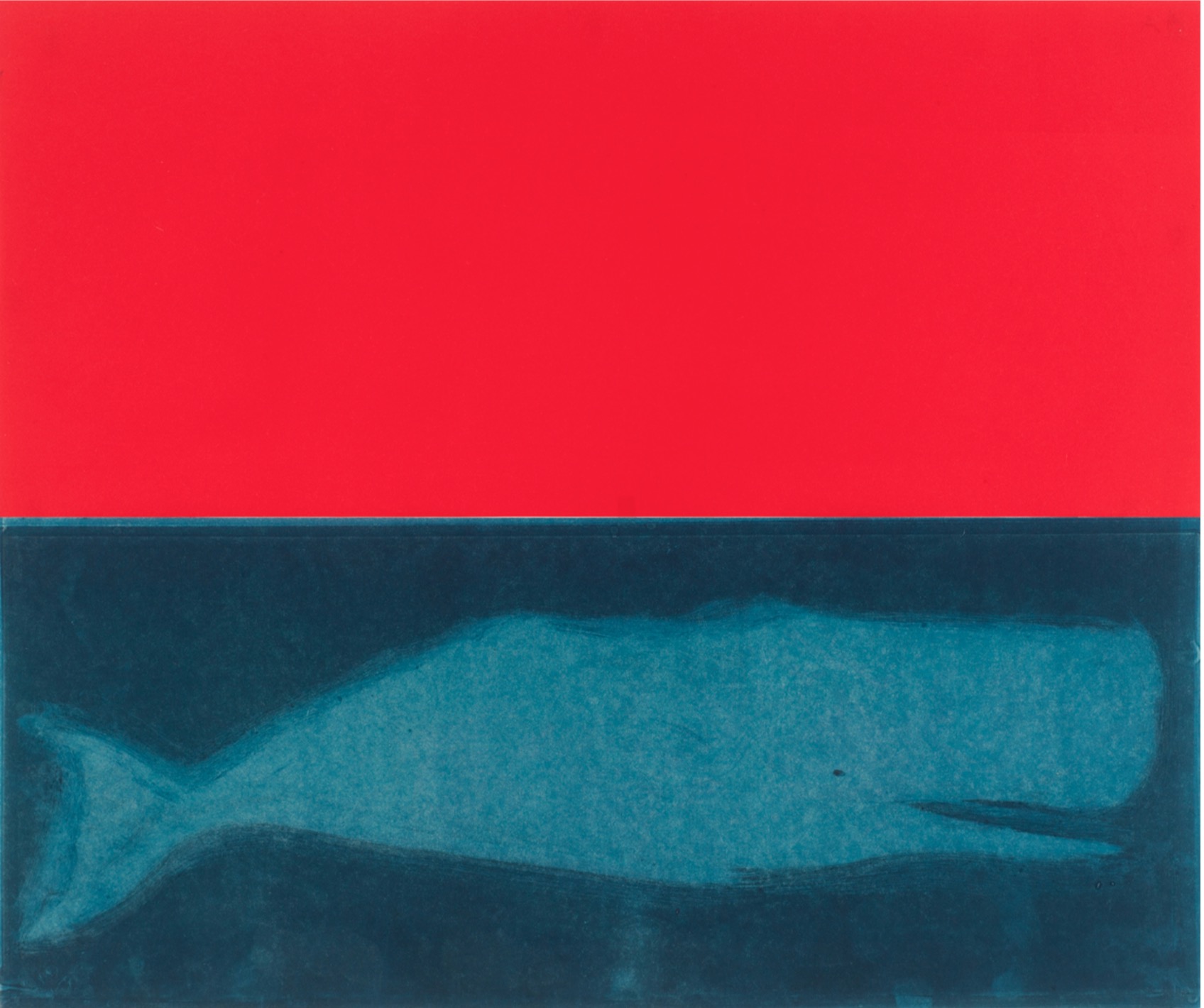
Deep Blue 28x30 monoprint
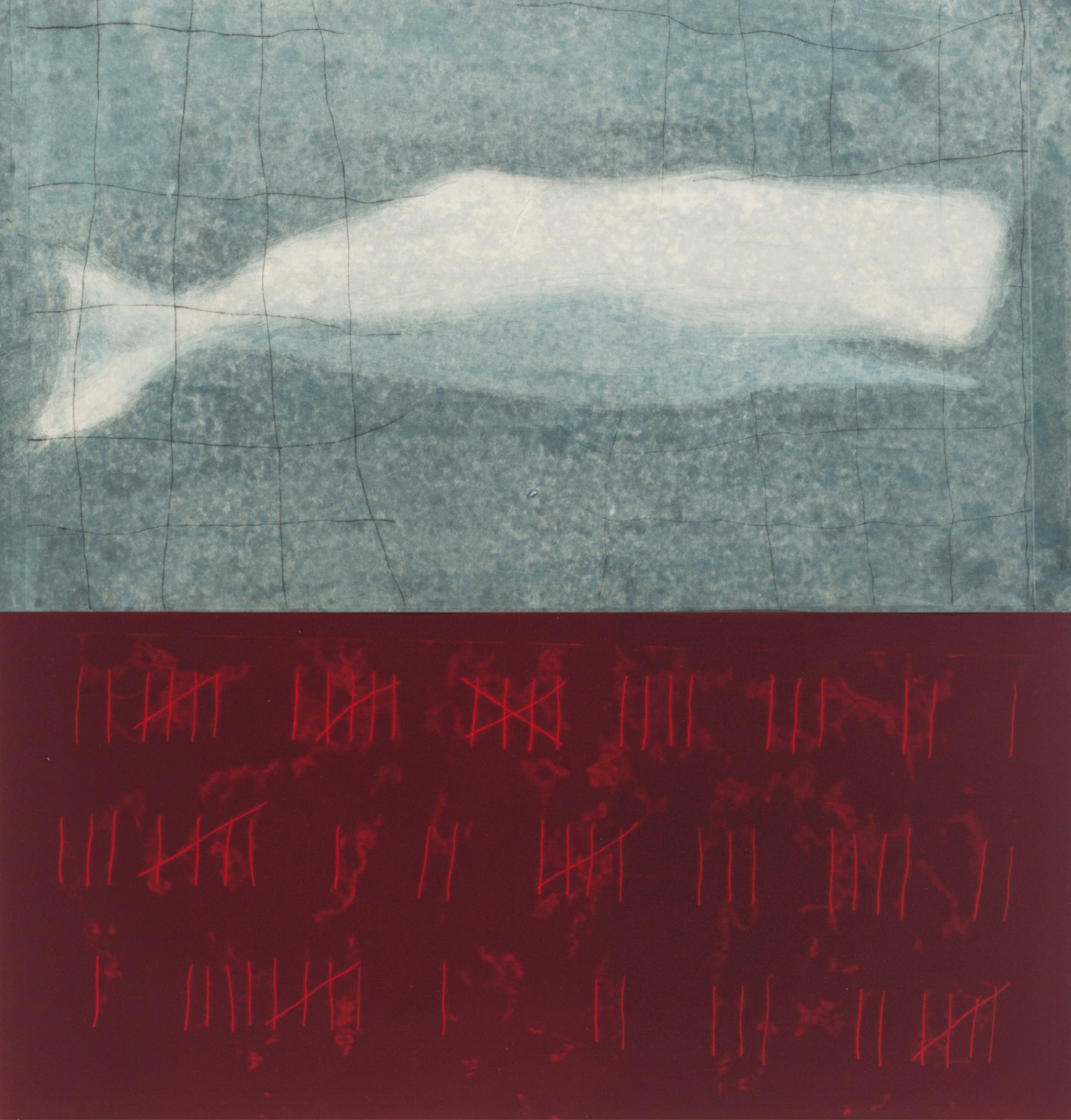
Counting 35x30 monoprint
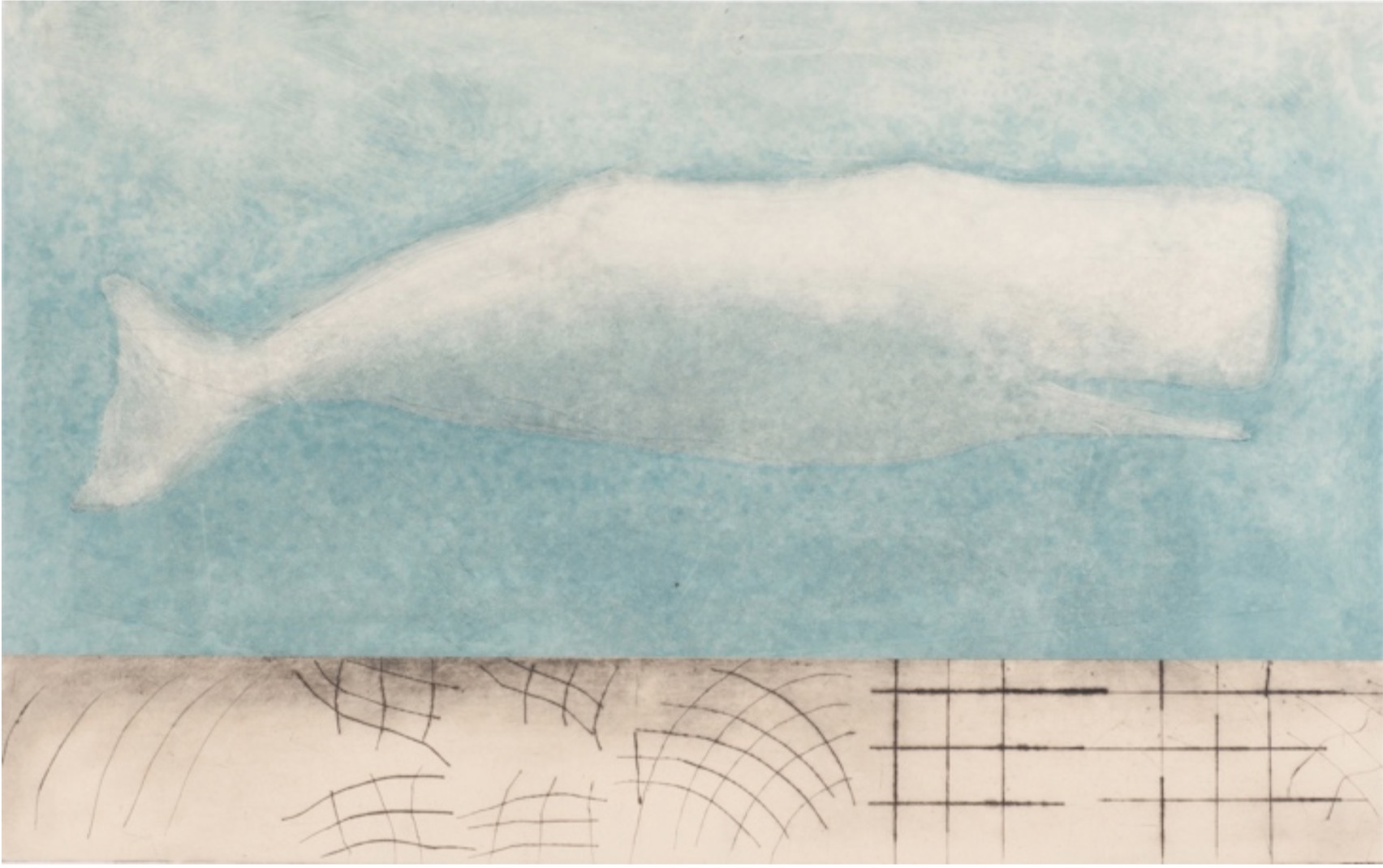
Sounding I 24x30 monoprint
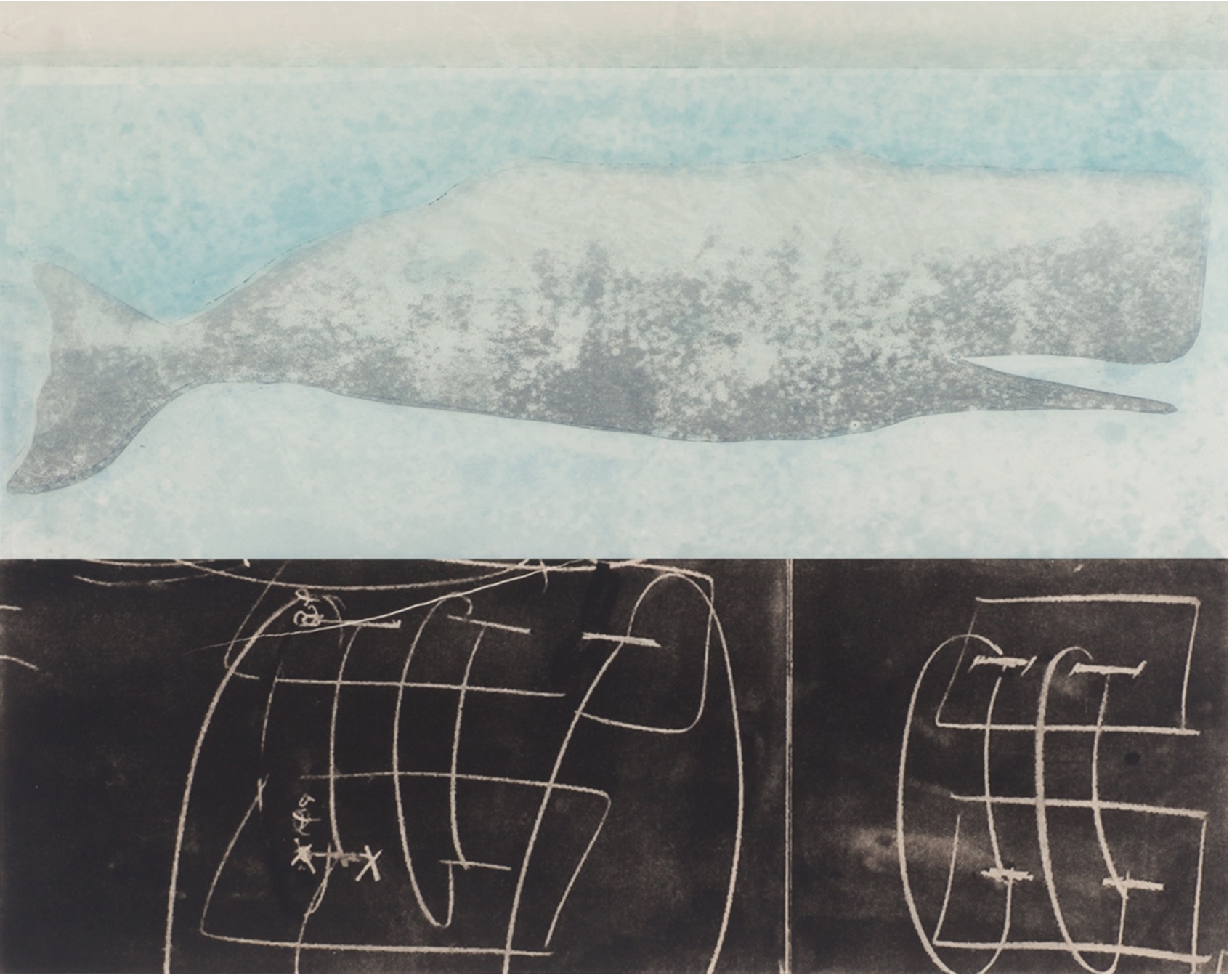
Whale Scratchings II 28x30 monoprint
WHALES
It is not down on any map;
True places never are.
-H Melville
whale; n. The Blue Whale is the largest animal on the planet. It can be as long as 100 feet and weigh as much as 200 tons (approximately 33 elephants).
As whales roam the earths’ oceans, many species communicate through a complex and mysterious collection of sounds. These ‘songs’ spin an interconnected web of information that can be projected as far as 600 miles. One song may continue for as long as thirty minutes.
The whaling industry flourished in this country in the 1700’s to mid 1800’s. All oil used in manufacturing, from sewing machines to factory machinery to oil lamps, was extracted from whale blubber. Whale bones would weep oil many decades after the whale’s death. Their baleens were used for hoop skirts, the ambergris for perfumes. Eventually, oil from petroleum replaced whale oil and the whaling industry slowly subsided in the US, just shy of extermination.
Sadly, several countries, including Norway, Iceland and Japan continue to hunt whales despite their dwindling numbers. Ten species of these noble creatures are critically endangered today.
Scientists have recently discovered that whale songs, Fin Whales in particular, penetrate the substrate of the ocean floor. Whale calls bounce between the ocean surface and the ocean floor, transmitting energy through the ground as a seismic wave. The wave is reflected and refracted by ocean sediment, the basalt layer beneath it and the gabbroic lower crust below that. Deep down.
Sonic vibrations create seismic images of the environment. Scientists can now view the composition of the oceanic crust with the help of whales. From the throats of whales, images are dragged up from the depths BELOW. The whales are literally singing their habitat into maps of the earth’s crust that scientists can record and study. The research is used to further our understanding of earthquake mechanics and carbon storage capacity. This collaboration across species should not go unnoticed. If we listen, we can hear what our ancestors are singing to us.
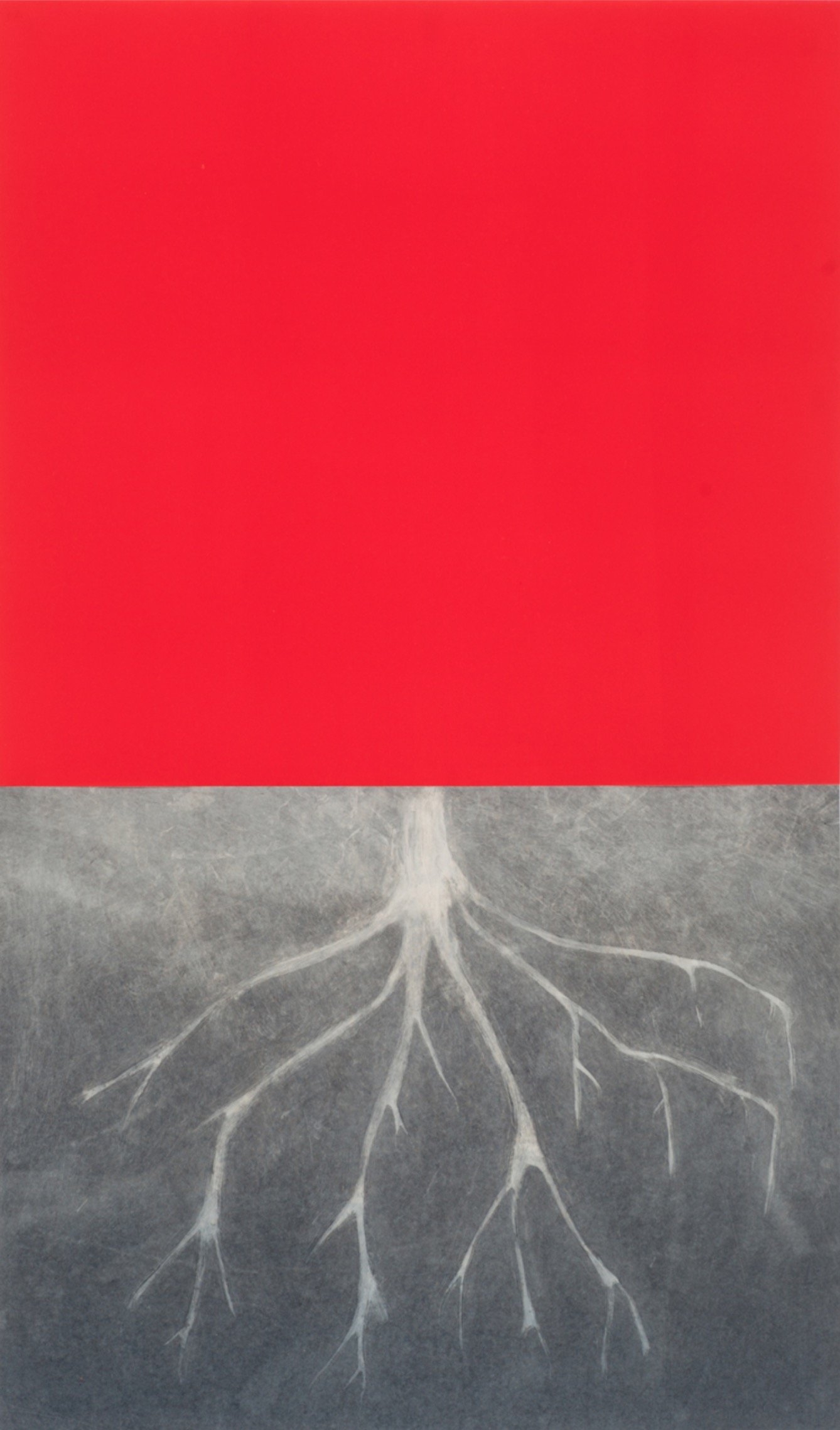
Red Tree 30x40 monoprint
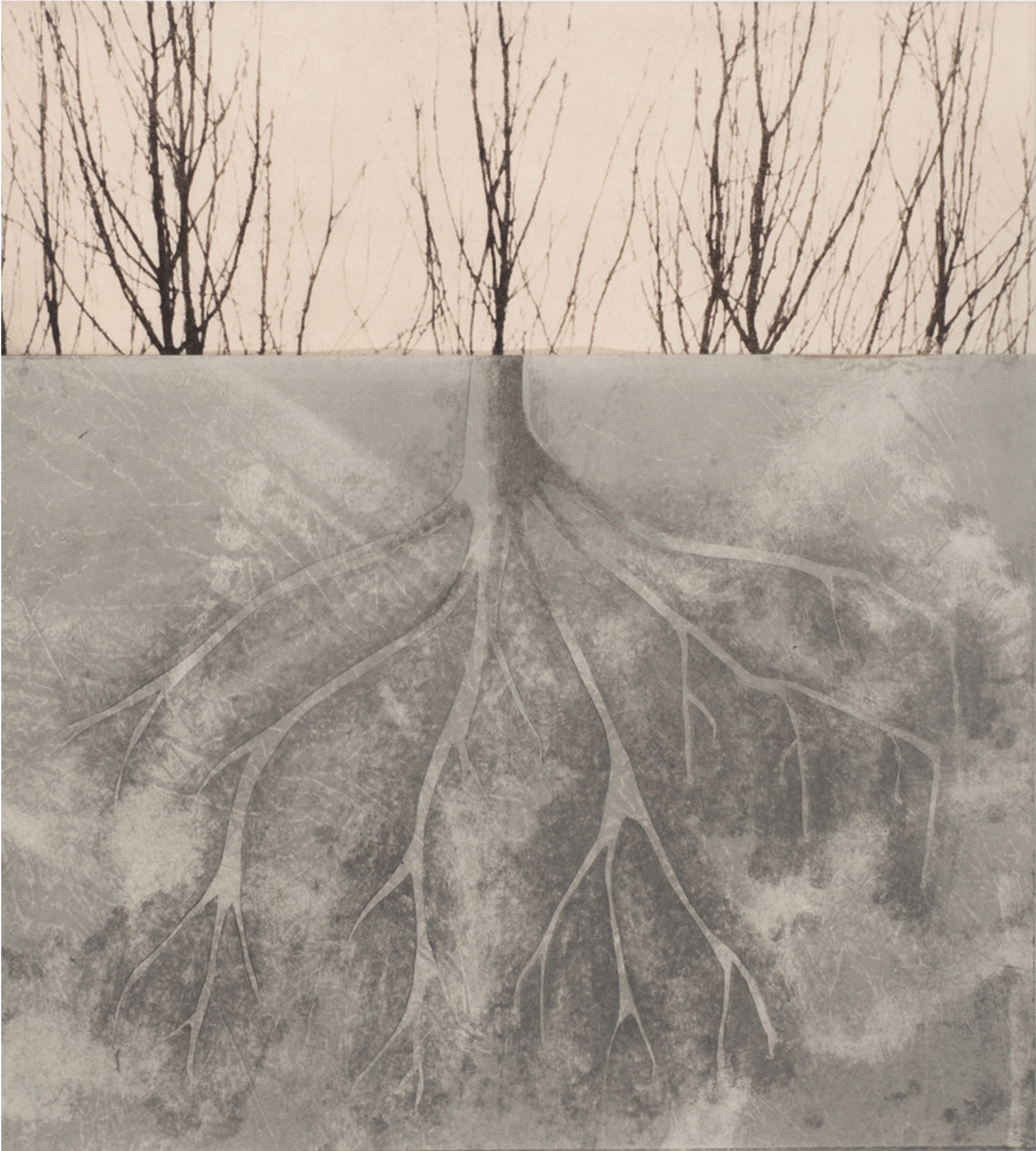
Winter II 42x30 monoprint
TREES
Trees experience pain and have memories and
tree parents live together with their children.
-The Hidden Life of Trees
Peter Wohlleben
Trees absorb carbon, and retain moisture, and 90% of the world’s species dwell in tropical forests. But rapid deforestation across the globe mindlessly marches onward, contributing to 18% of global warming. If we look deeply, we see clearly that we are on the same team, fighting for the planet. We must change our habits to live collaboratively.
Communication, cooperation, collaboration is how a forest thrives. They communicate through a mycelial network using fungi that live among their roots, acting as messengers. The fungi create mycorrhizal mats that cable together, enabling electrical messages to be sent from tree to tree. An aging tree will sacrifice itself to nourish younger trees around it, selflessly sending all its nutrients to help the weaker. They know when their time is up, when to pass the baton for the overall health of the forest. This is a wholistic approach. Trees are not greedy.
Trees also ‘talk’ across species. A ponderosa pine helps a struggling birch tree. A beech tree signals to a weak maple. They do not discriminate. They have an innate knowledge that working together is the best way to survive and thrive. When a tree dies, it lives on because it creates nourishment to everything around it. The soil, young saplings, insects, forest creatures, mushrooms, wildflowers. There is little waste in the natural word. Here is a sublime recycling program, a perfect circle where even death begets life. Our tree ancestors can be perfect teachers, offering us examples of sensible sustainability as we plummet toward the edge of Extinction in our ignorance.
About the Author
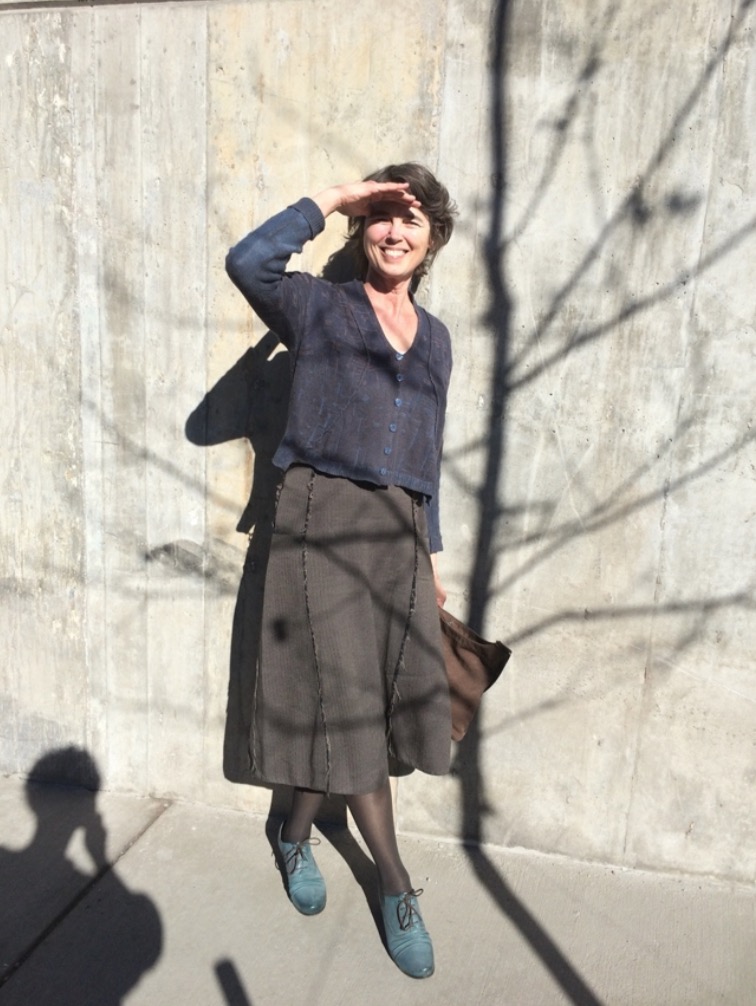
Marcia Weese grew up in downtown Chicago and spent her childhood roller skating between the dense urban landscape and the natural world of crows, lightning bugs, oak trees, and prairie grass. With a background in sculpture, she is drawn to the ephemeral quality of works on paper. Using three different printing processes, and sometimes combining them, she elicits mysterious and totemic images that seem to glow from within. Marcia’s works have been described as intimate, enigmatic portraits of elusive moments that land somewhere between shadow and memory.
To comment on this article, please click here.
Copyright © 2014-2021 Dark Matter: Women Witnessing - All rights reserved to individual authors and artists.
Email: Editor@DarkMatterWomenWitnessing.com
Please report any problems with this site to webmaven@DarkMatterWomenWitnessing.com
